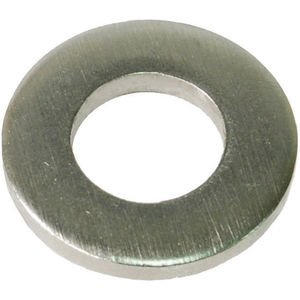The Main Principles Of Flat Washers - Steel & Nylon - Even Pressure Distribution - GL


3/8" x 1/8" Extra-Thick Stainless Steel Component Flat Washer - Fastenal

A2 Stainless Steel Metric Flat Washers
Split Lock Washers - Fastener Solutions for Dummies
Including to a truck take a truck base plate with a king pin installed, add the Range sleeved washer and a bushing add the wall mount and press down on the hanger and hold on the base plate on a table or tough surface area. Leading This Piece Covers It Well include the bushing to the wall mount and king pin then the Array washer include the nut and tighten down.
Including a disc-shaped piece of material with a hole in the middle, washers are typically utilized with bolts. They are usually used to distribute a bolt's load more equally to secure the joined workpiece from damage. Prior to driving a bolt into a workpiece, a washer is positioned at the top of the bolt's shaft where it fulfills the head.
There are several kinds of washers, nevertheless. Some washers are classified as flat, whereas others are categorized as lock washers. What's the difference in between flat and lock washers precisely? What Is a Flat Washer? The most typical kind of washer is a flat washer. They get their name from flat design.
Not known Facts About Flat Washers - Washers - Bolts Nuts & Washers
Rather, they are totally flat on both sides. This flat style makes them highly reliable at dispersing loads. Without a washer, the compressive forces of a bolt will be used to the underside of the bolt's head. A flat washer absorbs these compressive forces while consequently distributing them more evenly.

Lock washers aren't flat. They feature a semi-coiled design that slowly increases. This design enables lock washers to produce tension when installed. Lock washers work by avoiding the rotational motion of the installed bolt. Nuts are typically utilized for this function as well. When put on completion of a bolt, a nut can safeguard it from loosening.
When exposed to vibrations, a nut might loosen up. If a nut loosens too much, it may stop working to protect the bolt in the workpiece's threaded hole. With a lock washer, nevertheless, the bolt won't come out. A lock washer will "lock" the bolt in the workpiece's threaded hole. In Conclusion Flat and lock washers are two of the most common types of washers.
Fascination About Washers Flat Washer Screws & Fasteners - Mouser Electronics
A lock washer is a semi-coiled washer that's used to secure bolts in location. No tags for this post.
